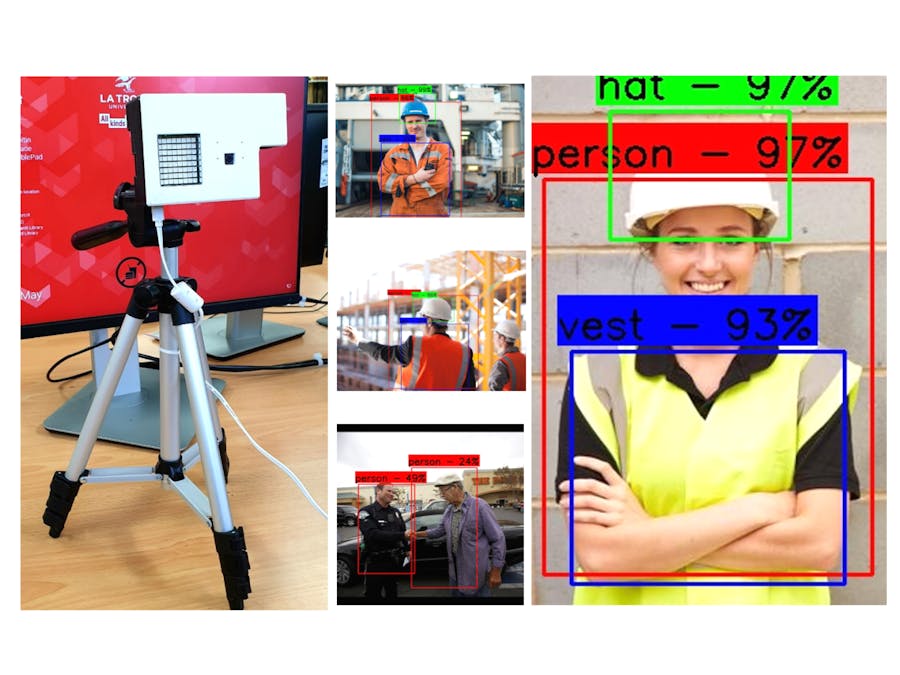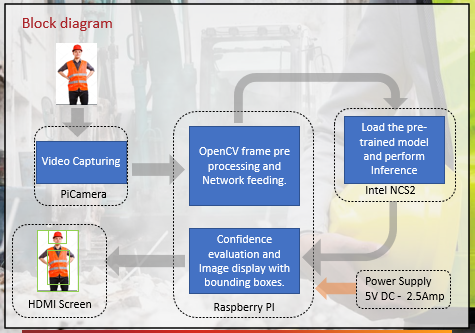Constructions sites are busy places and can constitute a very dangerous environment when many contractors are working at the same time, especially when they are not using appropriate personal protective equipment (PPE), the system described in this document detects whether workers are wearing appropriate PPEs or not running Tiny-YOLOv3 on a raspberry Pi with an Intel Neural Computer Stick 2 to accelerate the inference process.
This project was realized By Fernando, a graduate student from Master of Electronic Engineering as part of a project subject within a time frame of 12 weeks.
This device uses artificial intelligence on the edge to detect whether people in construction sites are wearing appropriate personal protective equipment (PPE) or not, it aims to increase the safety in the workplace autonomously and offline (without an internet connection). The whole system is based on an state of the art object detection technique called YOLO, YOLO stands for you only look once and is based on the fact that humans can recognize objects in an image instantaneously only looking at it once.
YOLO is basically a convolutional neural network that can be trained to detect multiple object classes, in this project it was trained to detect 3 different classes (Person, hat and vest). In order to train the model a dataset was created, contained 3000 fully annotated images (each image has a txt file associated which contains the coordinates of each object in the image). Also, data augmentation techniques were employed to increase the dataset without need to annotate new images.
Once that the network was trained it was converted using intel openvino software into a format that can be used in any intel platform such as fpga, intel neural compute stick, intel GPU, etc.
The implementation in this case was done using off the shelf products for quick development such as raspberry pi, raspberry pi camera, sense hat and a personally designed 3d printed case which gives portability and robustness fora low price.
The results can be seen in the demonstration, the system can detect multiple objects at the same time, the network generalize very well (it can detect hats and vests of multiple colors and types successfully as well as people of different gender and age).
This project is just a prototype but further work is needed to conceive a final commercial product, the main limitation is the dataset at the moment, more images need to be collected and labeled to make it more robust and accurate.















_t9PF3orMPd.png?auto=compress%2Cformat&w=40&h=40&fit=fillmax&bg=fff&dpr=2)



Comments
Please log in or sign up to comment.